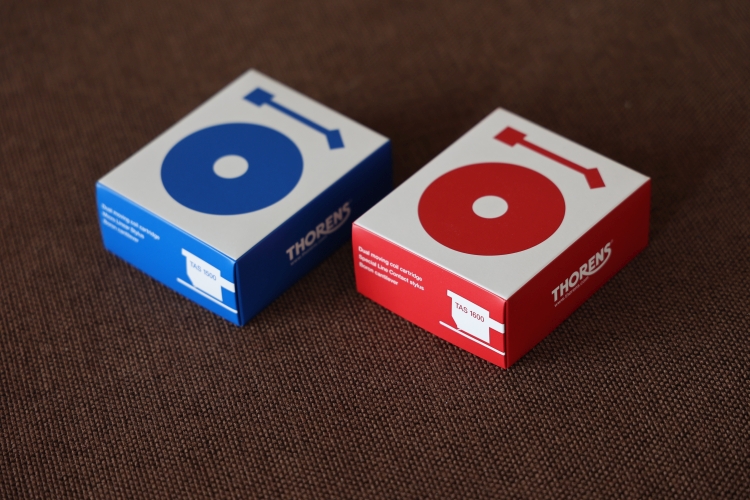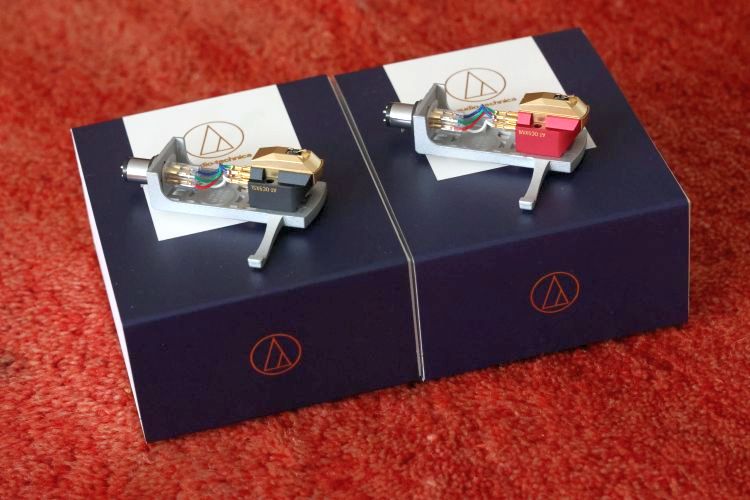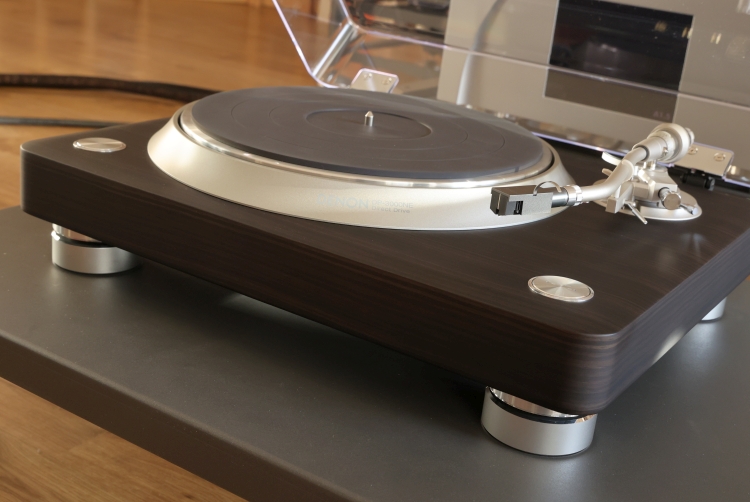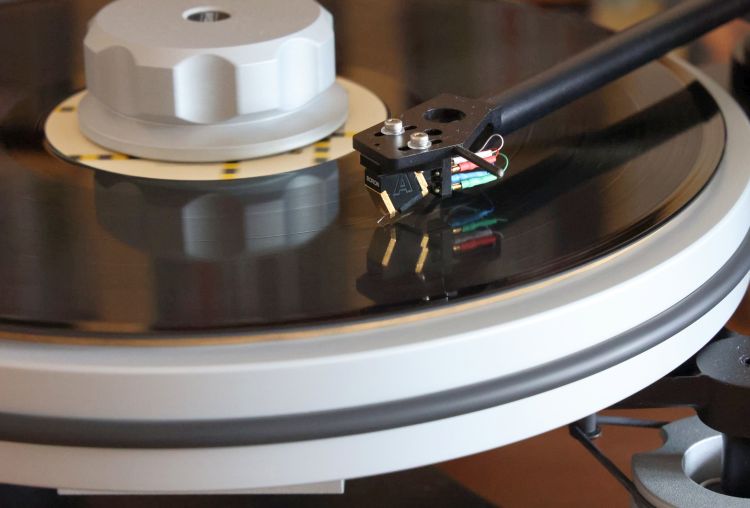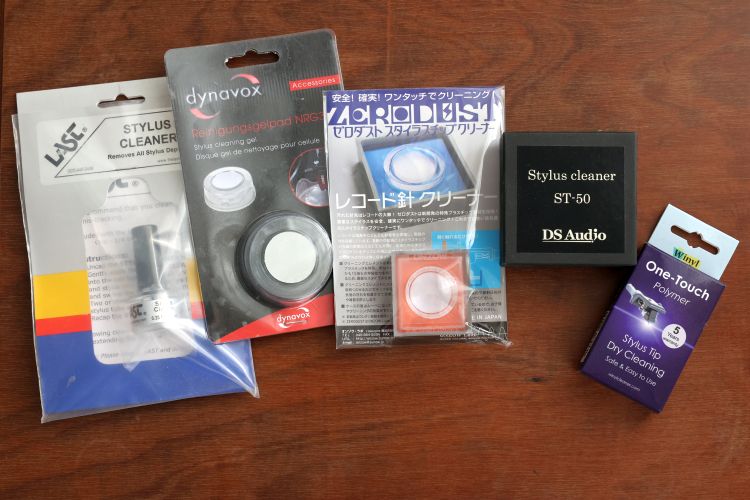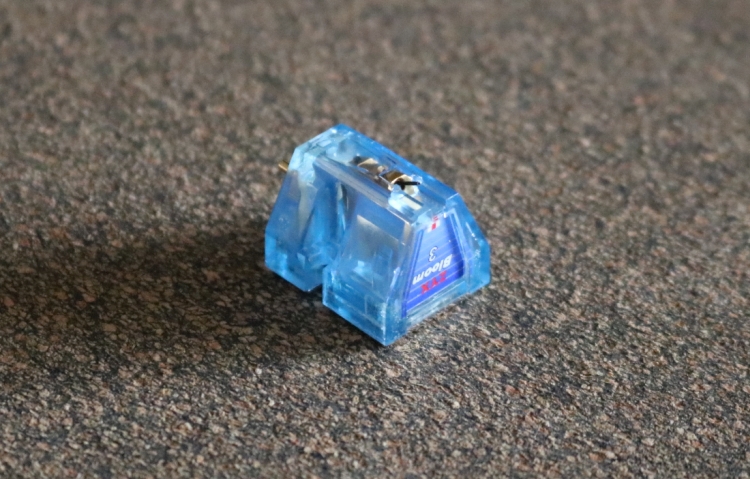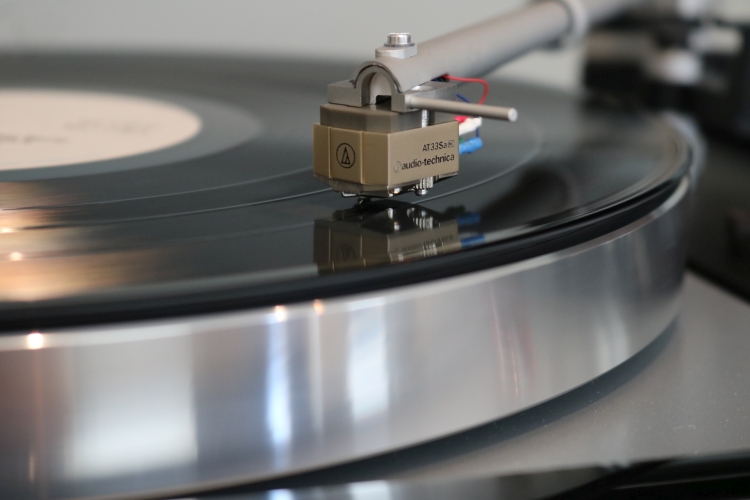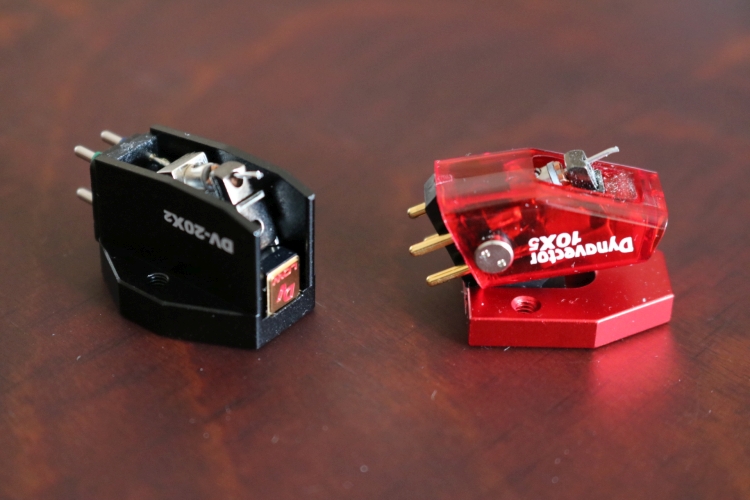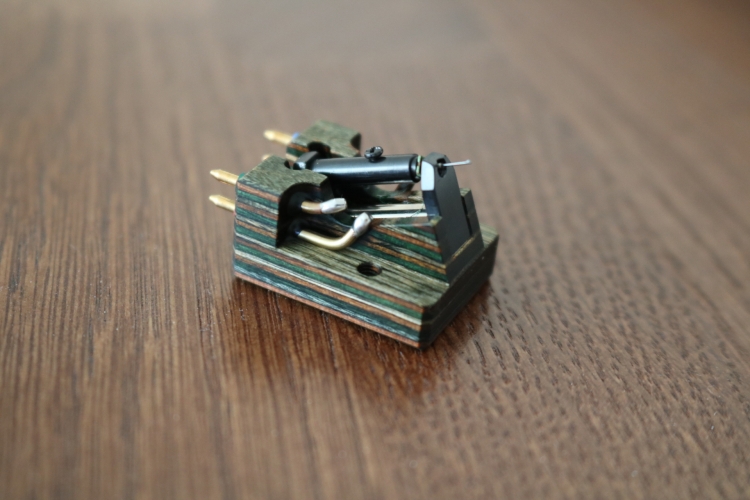
Review sample kindly supplied by ViRaHighEnd
Retail price 3.100 euro
About one year ago I reviewed the Aidas Panzerholz cartridge. When Victor Simakov asked me if I wanted to review the new Aidas Rainbow cartridge I was happy to oblige, especially since I was expecting a very nice new turntable. In case the brand name does not sound familiar: Aidas cartridges are handmade in Lithuania, Kaunas, by master Aidas Svazas.
The Panzerholz cartridge was quite uncommon due to its special damping system and its stylus made entirely of sapphire. On the surface similar to the Panzerholz, the Rainbow cartridge has a beautiful, rainbow-like, multicolor Durawood body and uses an Adamant boron composite cantilever with a double damping system. Durawood is DIN 7707 compliant and is said to have similar qualities as Panzerholz. As would quickly become evident during the listening tests, the Rainbow shows an Aidas family resemblance but also has a presentation all of its own.
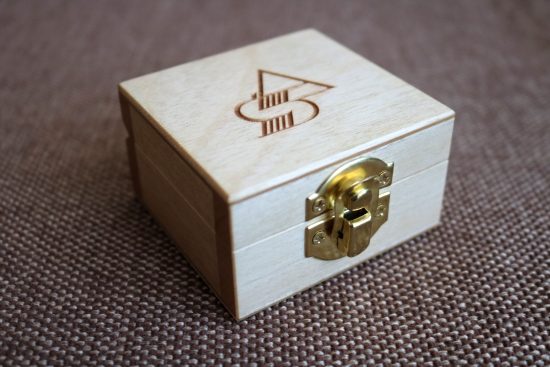
System Context
The turntable that will be used for this review is the beautiful Origin Live Calypso mk4 with Illustrious arm, Multilayer platter, and Silver Hybrid cable. As a secondary turntable, I also tried the Thorens TD160B with Origin Live Onyx tonearm. The humble Thorens is by now some 40 years old but it has been refurbished entirely with a beautiful new casing and many parts have been replaced by new ones in the process. As such, this TD160B may be simple but it is in good shape if, of course, not really fully doing the Aidas cartridge justice.
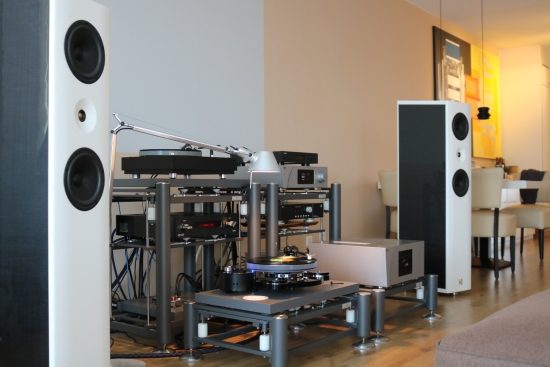
The Rainbow cartridge works synergistically with both turntables but, not surprisingly, it sounds much more impressive with the Origin Live turntable. With the Calypso and Illustrious combination, the cartridge sounds positively grande with a soundstage like a big bubble that extends in all directions outside of the speakers and with true front to back layering of sounds, whereas the Thorens tends to flatten the stage to a plane in line with the speakers. More importantly, although I thought that the Thorens was very finely detailed, which in a way it is, I now also hear how it truncates subtle individual sounds by blending them into simpler unified sounds whereas the Origin Live turntable renders each and every individual sound, no matter how tiny, in its own space. With this turntable, it seems that the strengths of the Rainbow cartridge are allowed to fully blossom.
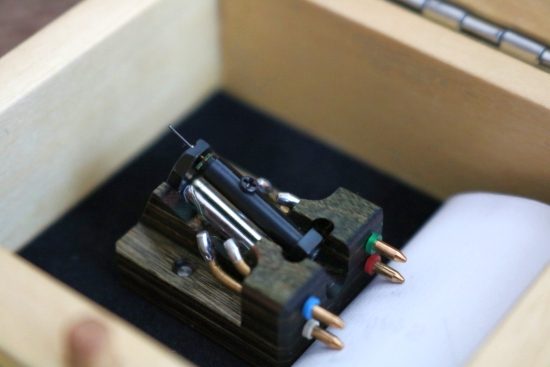
My go-to phono stage for some time has been the Benz Lukaschek PP-1 that, in spite of a very high 47K loading, seems to work well with the majority of carts that I have tried so far and with the Aidas cart, too, it seems to work very well. For proper cartridge reviewing, however, a stage without any adjustments is not ideal. I had planned to use a very nice phono stage but this got delayed and so the Lukaschek will have to do.
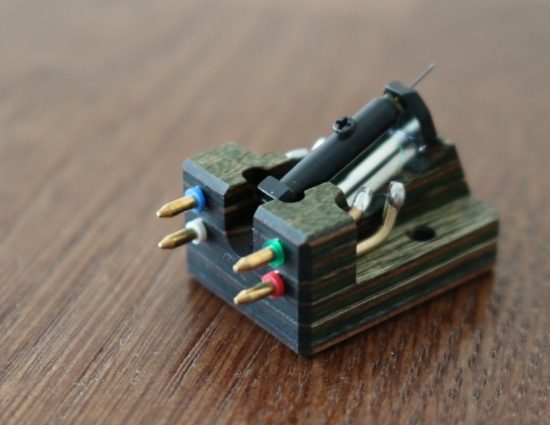
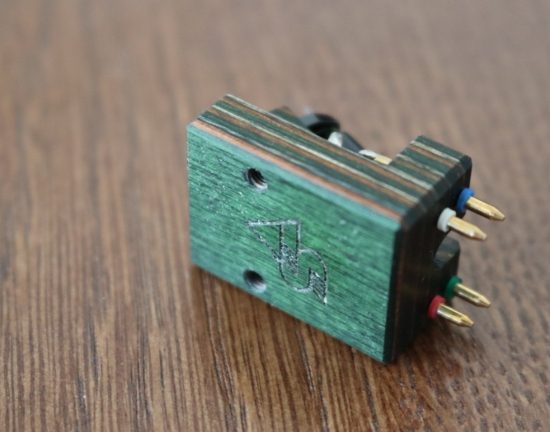
The main system consists of Kroma Audio Carmen loudspeakers powered by the CH Precision A1.5 amp which is fed by the affordable yet highly resolving and very neutral Audio GD Master 1 preamp for the Thorens part and the richly textured Ayon Stealth preamp for the Origin Live turntable comparisons.
Freshly mounted, with zero hours on it, the Rainbow sounded pleasant right away. It tracks sublimely, allowing difficult sounds such as lisps (Krall, anyone?) or hard-hitting hi-hats to remain utterly pure. And thanks to the needle’s super-finely polished micro ridge shape, it goes into the grooves deeper than my usual Denon DL304 and DL207 cartridges which not only makes for very accurate reproduction of records in general, it also taps into hitherto unused parts of otherwise slightly worn records. That’s the beauty of using a very good stylus: it allows one to have more fun when playing second-hand, otherwise worn out records.
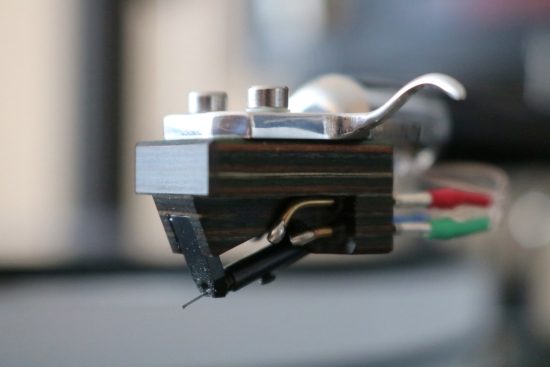
Aidas Rainbow mounted in the Origin Live Illustrious arm of the Calypso mk4 turntable
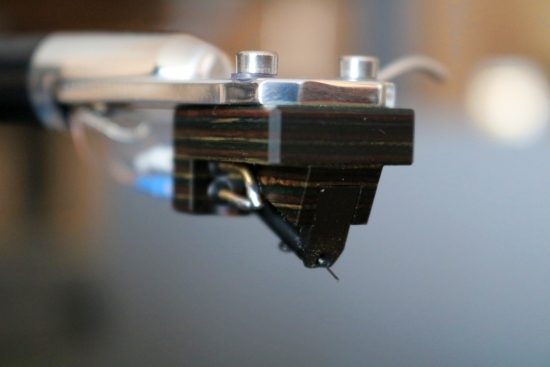
The AT-150mlx also has a micro ridge stylus and it, too, is highly refined but the carts are otherwise very balanced very differently. The AT has more of a stereotypical Japanese sound as I know if from this brand as well as from Denon: airy and fluid but also a little thin, especially through the midrange and the upper bass. I can still appreciate the presentation of these carts, particularly with electronic music but it is certainly not as natural and lifelike as that of the Aidas cartridge. Compared to the Aidas, those Denons and Audio Technicas just sound a little synthetic.
The stylus does tend to pick up more dust from the grooves but this, too, is an advantage, I guess, as it cleans my records at the same time while playing them:-)
Although the specification mentions 50 hours for running in, I already heard clear changes after only a couple of record sides and after 20 sides, the cartridge seems to have mostly come into its own. Initially, it was quite tight, but the sound soon gained more flow and fluidity while retaining all of the impressive articulation and resolution.
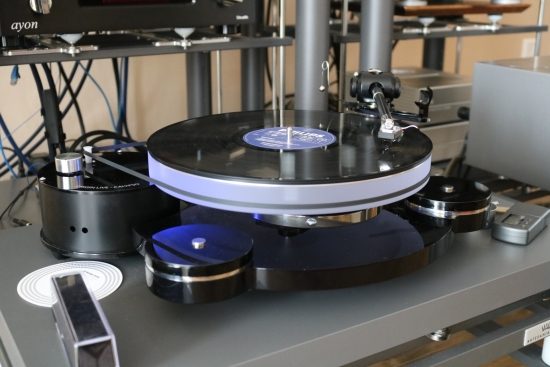
Origin Live Calypso mk4 with Multi-Layer Platter and Illustrious arm
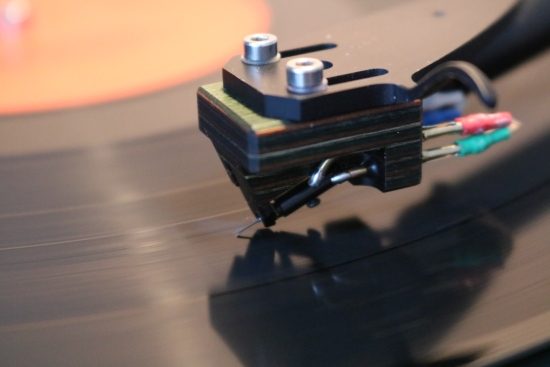
Bass is tight and articulate and the overall tonality is very natural. The frequency curve seems to be very flat: there is no emphasis on any part of the frequency range and the presentation is extremely coherent. The cartridge does not sound bassy or bloomy or colored in any way but still is full-bodied and tonally full yet in a highly neutral manner. Its resolution is incredible and this, combined with its sublime tracking abilities allows me to hear more subtle nuances than I thought were present in my records. It’s a worn-out cliche, I know, but it’s what I am hearing.
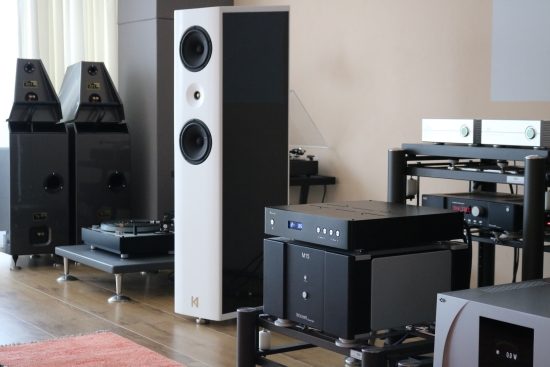
The Rainbow may be very neutral and even-handed but it is also very well-textured and convincingly lifelike in timbre. The Denon and Audio Technica have very good resolution and in that area alone the difference with the Aidas is not huge. In the areas of transparency, neutrality, texture, and timbre, however, the difference is enormous.
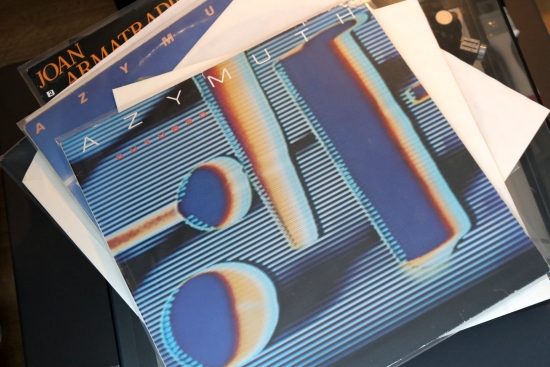
The Azymuth LP “Outubro”, which I am pretty sure is a pure analog recording, has always sounded engaging and musically interesting, even on my Technics and Thorens players. The Rainbow cartridge, however, is adding another dimension to this record, adding such a vigorously lifelike behavior that it reminds me of hearing these gentlemen live. Worthy successor Kiko Continentino notwithstanding, I have been fortunate to have heard the band play here in the Netherlands shortly before the Jose Roberto Bertrami passed away. It was a very special occasion and the Origin Live turntable with the Rainbow cartridge is transporting me back to this event.
Joan Armatrading’s Show Some Emotion has a sonorous fullness and, again, such acoustic credibility that it becomes impossible not to be moved by this album.
The Art Of Noise – Who’s afraid of The Art Of Noise is probably known for the Moments In Love track. I’m sure most people have heard this track on the radio but trust me, you have not really heard it yet. On this LP record, the track was mesmerizingly beautiful but what amazed me, even more, was that the entire album has an urgency and purity coupled with an almost magical quality that I never heard before when playing the CD or the digital files.
This cartridge’s treble behavior is also impeccable. Hi-hats are amazingly clear and refined and entirely spit-free, but guitar strings, too, come out with startling clarity. Lest all this talk about accuracy instill the idea that this cartridge may be too clinical for its own good then let me correct that right away. This is probably the most natural cartridge that I have used so far. Yes, it is highly precise but it is also highly refined and fluid and highly engaging. While crisp and extremely finely resolving, the Rainbow certainly is not bright.
The Rainbow’s bass precision and -articulation are staggeringly good. The whole presentation is so convincing and so captivating that I am forced to throw in another cliche: that listening to analog records this way spoils me for listening digitally. Analog replay such as this is absolutely rivaling digital, it is simply that good. And I mean CH Precision digital, not just any digital front end. The Origin Live turntable is absolutely fantastic but it needs a good cartridge to really shine and the Aidas Rainbow absolutely delivers.
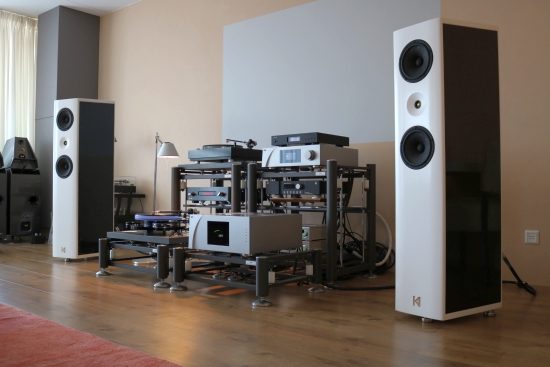
Urgent, incisive, direct, and incredibly dynamic, are terms that first spring to mind with the Rainbow cartridge. Whereas the Panzerholz tended to enhance the transient to make for a sound that is extremely tight and dynamic, the Rainbow is almost just as dynamic yet with transient behavior that seems to me to be more natural. It is very lively but also has good flow. The Panzerholz was also very impressive but more in a technical manner. The Rainbow delivers similar technical qualities as the Panzerholz but is more fluid and relaxed and while this is probably also a matter of taste, the latter is emotionally definitely more appealing to me.
One thing the Rainbow cartridge is not is Romantic. Quite the opposite, actually. But while it is frighteningly honest and does not sugar-coat anything, it never sounds hard or harsh.
Conclusion
I am really impressed with this cartridge. It delivers benchmark-setting accuracy, articulation, purity, transparency, dynamics, incisiveness, and even-handedness with bass to die for, along with an absolutely non-edgy, texturally rich, very neutral yet highly natural delivery.
Specifications
Body: Durawood
Cantilever: Adamant boron composite
Stylus: Namiki super fine MicroRidge
Output: 0.28mV
Magnet system: AlNiCo5
Tracking force: 2.0g
Compliance lateral: 12 um/mN
Cartridge weight: 8.70g
Recommended loading: 100 – 1,000 ohms
Channel separation: >30dB/1kHz
Channel balance: >1dB/1kHz
Coils: copper 0.03mm
Mount: thread M2.5×0.45, 1/2 inch / 12.7mm standard between the holes
Coil impedance DC: 4 ohms
Inductance: 3.20uH
Capacitance: 50nF
Trackability at 300Hz/2.2g: 60uM
Vertical tracking angle: 20°
Recommended tonearm mass: medium
Break-in period: 50 hours
External Links
Manufacturer:
Aidas Cartridges
Associated Websites:
aidasaudio.com
virausa.com
Read Also
ViRa Aidas Panzerholz MC Cartridge
ViRa Aidas Gala Gold LE MC Cartridge
